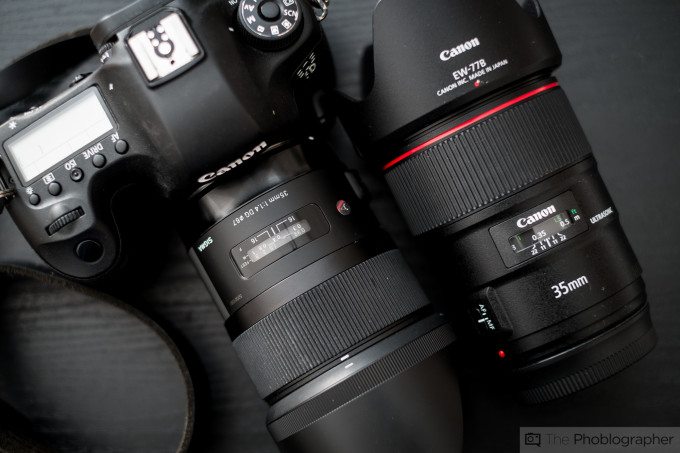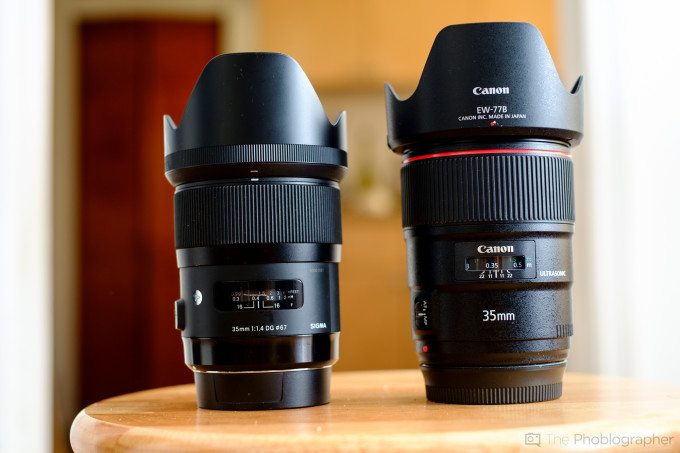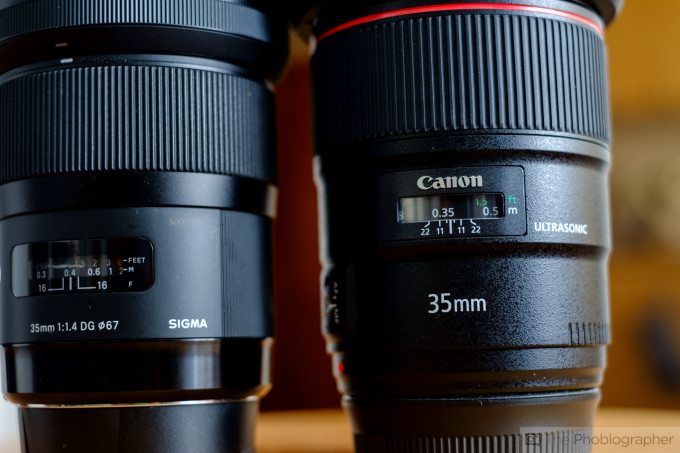Last Updated on 12/04/2015 by Chris Gampat
Go back to 2012: Sigma announced a brand new 35mm lens that would help to launch the company’s new Global Vision program. That Sigma 35mm f1.4 Art lens would go on to win award after award after award and make Canon’s then aging 35mm f1.4 L look seriously antiquated. Since then, Canon has had three years to respond; but in truth they had almost 20 years to put out a new version.
Earlier this year, we got that response. The company put out their 35mm f1.4 L II: an update to the previous lens that includes new optical coatings, weather sealing, and a new exterior.
But how do the two stand up next to each other?
Tech Specs
Specs for the Canon 35mm f1.4 L II taken from B&H Photo for $1,799
| Features | |
|---|---|
| Autofocus | Yes |
| Physical | |
|---|---|
| Filter Thread | Front: 72 mm |
| Dimensions (DxL) | Approx. 3.17 x 4.15″ (80.4 x 105.5 mm) |
| Weight | 1.67 lb (760 g) |
| Packaging Info | |
|---|---|
| Package Weight | 2.45 lb |
| Box Dimensions (LxWxH) | 8.1 x 5.4 x 5.4″ |
Specs for the Sigma 35mm f1.4 Art lens taken from the B&H Photo listing for $899
| Features | |
|---|---|
| Image Stabilization | No |
| Autofocus | Yes |
| Physical | |
|---|---|
| Filter Thread | Front:67 mm |
| Dimensions (DxL) | Approx. 3.03 x 3.70″ (7.70 x 9.40 cm) |
| Weight | 23.46 oz (665 g) |
| Packaging Info | |
|---|---|
| Package Weight | 2.1 lb |
| Box Dimensions (LxWxH) | 5.7 x 4.9 x 4.7″ |
Ergonomics
The Sigma 35mm f1.4 Art and the Canon 35mm f1.4 L II have similar bodies. They’re characterized by the front element, then the massive focusing ring, then the distance scale and a single AF/MF switch on the left. Both focusing rings are made of rubber and for the most part, many folks wouldn’t be able to tell them apart with the exception of one big factor.
The Sigma 35mm f1.4 body has very smooth, brushed metal. It’s gorgeous and feels great in the hand. On the Canon is a plastic exterior with a textured surface to give you better grip. In practical use though, neither surface is grippy enough to prevent the lens from falling out of your hand by accident. You’ll really need to grip onto the rubber ring to do that.
Build Quality
Both lenses have a very good build quality; but in their own different ways. The Canon lens, pictures above has weather sealing not only on the mount in a black rubber ring but also internally. To complete it, Canon states you can add a UV filter.
Sigma on the other hand has no weather sealing; but has a metal body. That can really mean one thing or another. While metal has a better endurance to impact damage than plastic does, a dented lens is still a lens that won’t function correctly over a cracked lens exterior.
To that end though, if you take a bat to a lens either way, it’s going to be damaged.
Autofocus

Surprisingly, both lenses focus just a quickly with the Canon 6D and also just as accurately. Further, they’ll have the same occasional issues with the outer focusing points. This is part of the quality control that the Global Vision program enables–lenses that focus just as quick and accurate as Canon’s.
Image Quality
For this test, the typical setup for lens tests was done. The Canon 6D was mounted on a tripod and didn’t move at all during the process. The exposure for the images was ISO 100, 1/50th and the aperture was the variable. To present even lighting and colors through the test, the white balance was set to Daylight and the Phottix Laso trigger was used with the Canon 580 EX II and the 430 EX II with the trigger set to TTL.
The images were shot at f1.4, f2.8 and f4 for each lens and the TTL flash output changed the amount of light that needed to be delivered accordingly. Then the images were brought into Adobe Lightroom, given the same sync settings and exported.
f1.4


f2.8
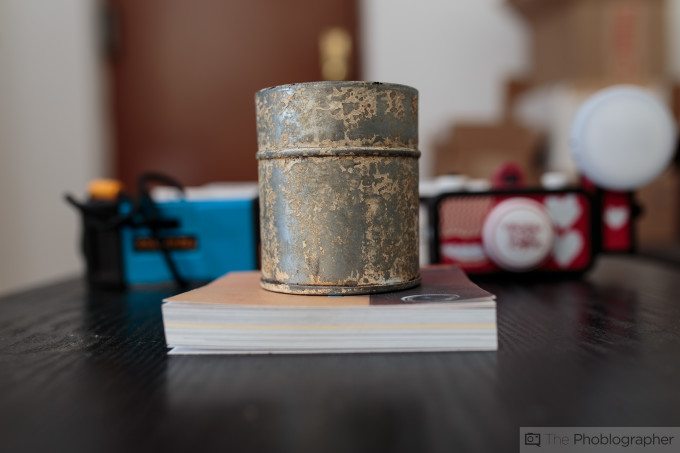
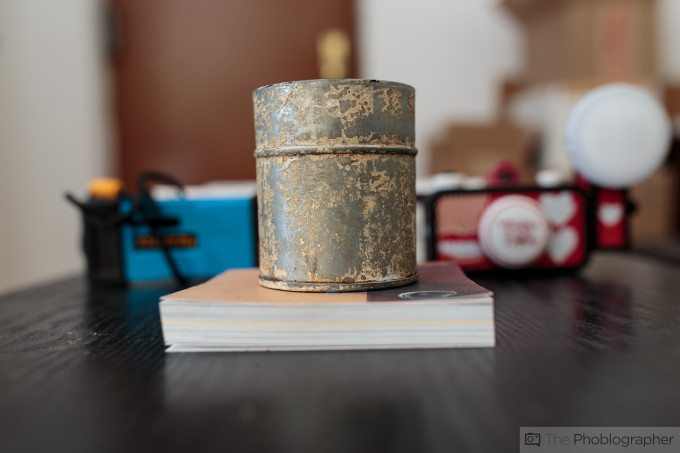
f4
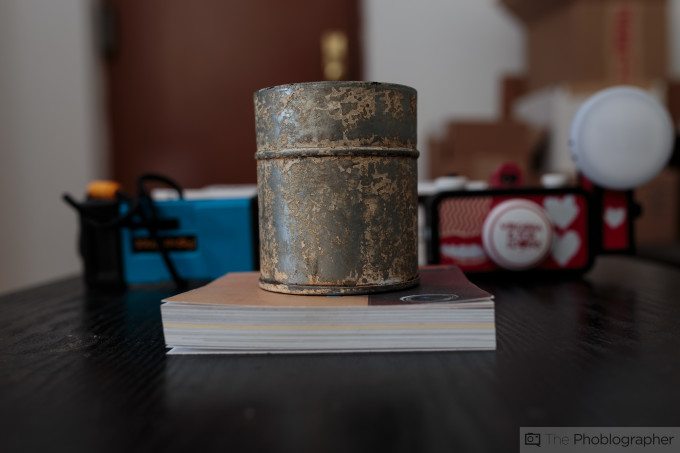
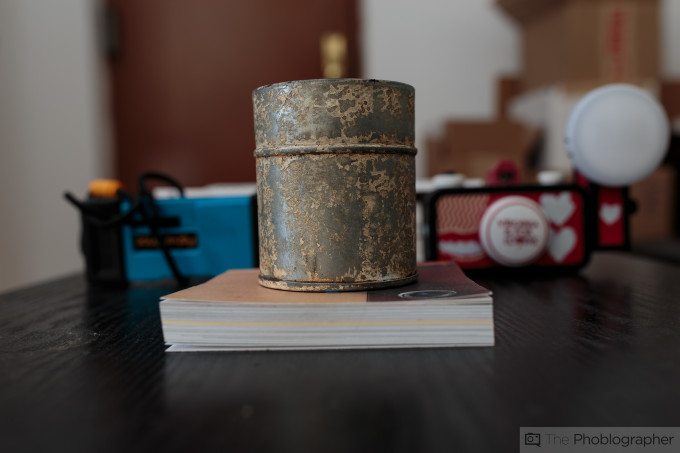
Comparisons
From this very quick test, here’s what I can conclude.
- Sigma’s 35mm f1.4 is ever so slightly sharper
- Both lenses have nearly identical bokeh. This is a change from the original L lens which I believe had better bokeh. When put against the f2 IS version, this all becomes even more interesting.
- Sigma’s color rendition is slightly more saturated. This is evident too with skin tones. The portrait sample shown earlier from the 35mm f1.4 L II shows impeccable skin tones and Sigma often tends to oversaturate these colors. But to be fair, that’s Sigma’s token image quality and lots of films (including me) love that.
- If you were going into a tough weather situation, you’ll probably want to bring the Canon lens with you.
- Both have the same focusing performance.
- For nearly twice the price, you’re paying for weather sealing and a Blue Refractive element in the Canon lens. However, we all know that these problems are very easily fixed with post-production.


